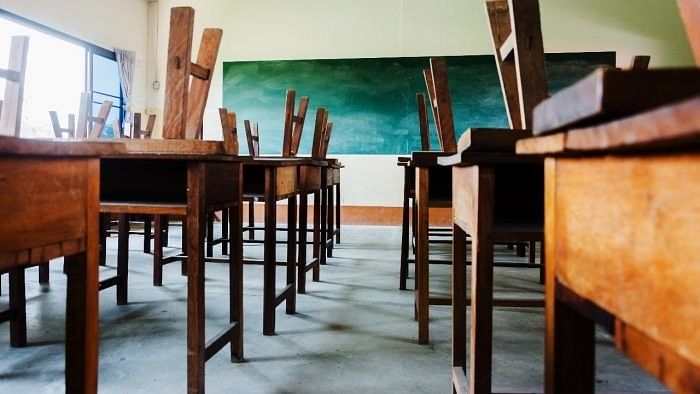
Representative image of a classroom.
Credit: iStock photo
“A child without education is like a bird without wings,” goes a Tibetan proverb. The wings start developing at home and then expand in schools. Schools are the places where children are exposed to the outside world for the first time. They are like ‘incubation centres’ that prepare them for the future. The ‘Right to Education’ policy sends a clear message that school education is not a luxury but a necessity for a healthy society and for each individual. The proposed ‘Council for School Education’ has to evolve strategies to address the following issues, for effective implementation of this policy.
The National Education Policy (NEP) 2020 has categorised the children of age group 3 to 18 years into four groups with a 5+3+3+4 structure, based on the research findings on the learning abilities of children. This covers the stages from anganwadi/pre-school to secondary education of twelfth grade. The recently published National Curriculum Framework (NCF) for School Education 2023 outlines the educational framework and guidelines for school education in India. NCF 2023 contains updated approaches to teaching and learning, subject-wise curricular guidelines, cross-cutting themes, and strategies to promote holistic development and quality education. The schools are expected to adopt the guidelines of NCF. The Ministry of Education (Ed Monitor, October 18, 2023) has plans to create a ‘One Nation, One Student ID’ called ‘Automated Permanent Academic Account Registry’ (APAAR) for every student from pre-primary to higher education, starting from next year. The scheme aims to provide a centralised system for tracking academic performance and achievements. Some states and Union Territories have already initiated steps to implement it.
Students/parents have a wide choice of diverse institutions to start their school journey, which are governed by different boards. For example, SSLC and PUC Karnataka, CBCS Delhi, ICSE Delhi, International General Certificate of Secondary Education (IGCSE, exams by University of Cambridge, UK), International Baccalaureate (IB, Switzerland), National Institute of Open Schooling (NIOS) Delhi, etc. These boards have different visions and philosophies on school education, which are reflected in their curriculum as well as pedagogy.
School education is a huge sector that involves a large number of schools and students. According to an education ministry report, the enrolment of students in Karnataka’s government schools reached 54,45,989 in 2021-2022, up from 50,31,606 in the previous year. The overall enrolment, from pre-primary classes to Class 12 in both government and private schools, was 1.2 crore, up from 1.1 crore in 2020-21.
Students who complete their education from different types of schools may have different levels of competence, abilities and potential. After finishing Class 12, they have to pursue higher education. To get admission to the higher education programme of their choice, students have to clear national-level entrance tests relevant to their career. Some of these tests are JEE Main, JEE Advanced, BITSAT, VITEEE, NEET, CLAT, AILET, LSAT, NDA and NA, Indian Army TES, IMU CET, ICAR AIEEA, NIFT, AIEED, NID DAT, UCEED, etc. Apart from these, there are also state-level tests like CET, and exams of private universities. The success of a student depends on the quality of training they receive at school.
The competition for admission is intense, and there is a perception that schools are not able to prepare students for competitive national examinations. As a result, a parallel profession of unregulated ‘tuition houses’ has emerged. The teaching and learning that should take place exclusively in schools is gradually taken over by a ‘tuition prominent phase’ that leads to privatisation and commercialisation of education at all levels. A strategy is required to overcome this exploitation.
The above picture gives a brief overview of the vastness, complexity, challenges and heterogeneity of school education in Karnataka. If one looks at the national level, the domain of ‘School Education’ is huge and complex, and it overtakes the overall size of all types of higher education put together. The biggest challenge is to provide a satisfactory academic ambience — with well-trained and adequate number of teachers; infrastructural ambience — with supporting material for teaching and learning, and physical ambience — with classrooms and space for extra-curricular activities, in all schools.
To address the requirements and challenges of school education and to do justice to the aspirations of students and parents, the system needs overarching bodies. Similar bodies have already been conceived for higher education. The author suggests the creation of ‘Karnataka State Council for School Education’ and ‘National Commission for School Education’ at the national level. These bodies would have the responsibility of mentoring schools to equip children to succeed in higher education.
(The writer is former director of NAAC and former VC of Bangalore University)